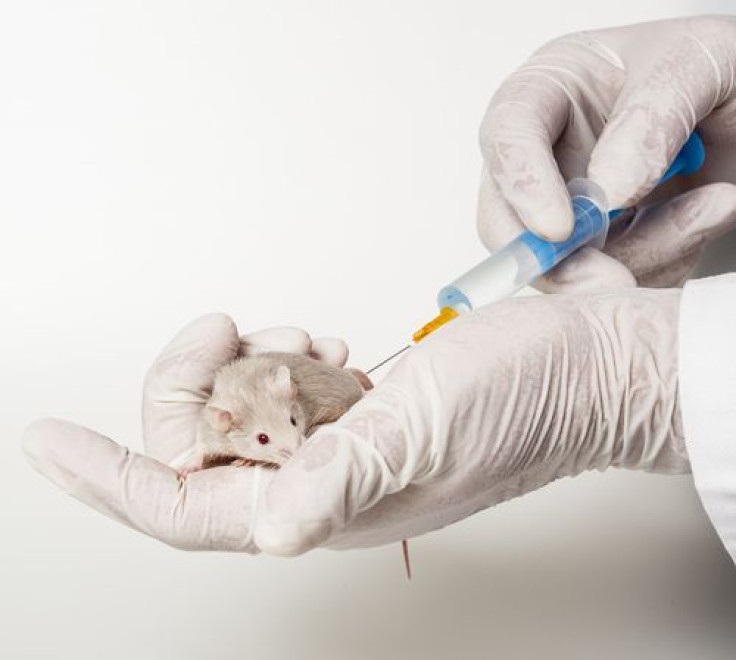Type 2 Diabetes Symptoms Reversed In Mice With Single Injection Of Protein FGF1; Stabilizes Glucose Levels

Salk Institute for Biological Studies scientists have discovered that a single shot of the protein FGF1 can stabilize blood sugar levels to normal in mice models with diet-induced type 2 diabetes.
Once injected, their sugar levels remained normal for more than two days, according to the study published in Nature. This discovery could usher the development of revolutionary diabetes therapies, which would be safer and more effective. "Controlling glucose is a dominant problem in our society," said Ronald M. Evans, director of Salk's Gene Expression Laboratory and corresponding author of the paper, in a press release. "And FGF1 offers a new method to control glucose in a powerful and unexpected way."
The miracle protein not just keeps blood sugar under control but continued use also reverses insulin resistance, the underlying cause of type 2 diabetes in adults. And the best part is it has no proven side effects, unlike other diabetes medication.
Type 2 diabetes accounts for 90 to 95 percent of all diabetic cases and currently 30 million Americans have been estimated to have the disease. Type 2 diabetes is all about what your body does with insulin — it either does not produce enough to maintain normal glucose levels or the insulin is not well-utilized to absorb the glucose into the cells. The latter is called insulin resistance and is possibly brought on by obesity and a sedentary lifestyle.
The symptoms for type 2 diabetes develop rather slowly. In fact, people with diabetes may not even know they have it until they get their sugar levels checked. If it’s not under control, diabetes can lead to serious and sometimes life-threatening complications. While there is no specific cure to eliminate diabetes, it has to be managed with the correct diet, lifestyle changes, and medication that changes blood sugar levels.
Diabetes medication currently available attempts to reverse insulin resistance by changing expression levels of genes to lower glucose levels in the blood, or they stimulate increased insulin production. But the obvious problems with these insulin-increasing drugs (eg. Byetta) is that they may lead to hypoglycemia or low blood sugar, which if severe, may lead to seizures or induced coma.
How IS FGF1 Different From Other Available Meds?
The Fibroblast Growth Factor 1 (FGF1) is a protein encoded by the FGF1 gene and plays a role in several biological processes, including cell growth. In 2012, the scientists discovered another function of this protein: its ability to help the body in glucose metabolism. They arrived at this conclusion when they found that mice lacking FGF1, when put on a high-fat diet, quickly developed diabetes.
They then tested if extra levels of FGF1 injected into diabetic mice would change their symptoms in any way. The results were astonishing, as with just a single dose, blood sugar levels quickly dropped to normal levels in all the diabetic mice.
"Many previous studies that injected FGF1 showed no effect on healthy mice," said Michael Downes, a senior staff scientist and co-corresponding author of the new work. "However, when we injected it into a diabetic mouse, we saw a dramatic improvement in glucose."
The researchers also found that FGF1 is a significant improvement to other available drugs, since even at high doses it does not cause side effects like hypoglycemia, associated with drugs like Actos. Instead, the injections restored the body's own ability to naturally regulate insulin and blood sugar levels, keeping glucose levels at a normal range and reversing insulin insensitivity.
"With FGF1, we really haven't seen hypoglycemia or other common side effects," said Salk postdoctoral research fellow Jae Myoung Suh, a member of Evans' lab and first author of the new paper. "It may be that FGF1 leads to a more 'normal' type of response compared to other drugs because it metabolizes quickly in the body and targets certain cell types."
The exact biochemical processes involved in FGF1’s role in stabilizing sugar levels in not yet understood, but the team has discovered that the protein's ability to stimulate growth is independent of its effect on glucose, bringing the protein a step closer to therapeutic use.
The scientists now plan to take their research forward by understanding the signaling pathways and receptors that FGF1 interacts with. They are also planning human trials of FGF1 with collaborators, but it will take time to fine-tune the protein into a therapeutic drug.
"We want to move this to people by developing a new generation of FGF1 variants that solely affect glucose and not cell growth," Evans said. "If we can find the perfect variation, I think we will have on our hands a very new, very effective tool for glucose control."
Source: Evans R, Downes M, Suh J, et. al. Nature. 2014.



























